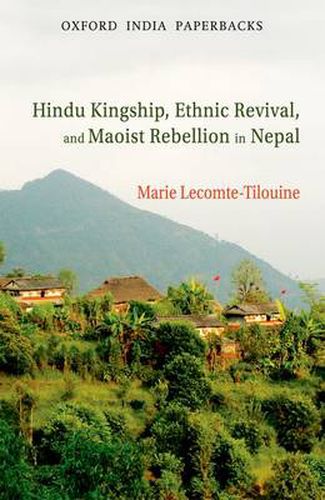Readings Newsletter
Become a Readings Member to make your shopping experience even easier.
Sign in or sign up for free!
You’re not far away from qualifying for FREE standard shipping within Australia
You’ve qualified for FREE standard shipping within Australia
The cart is loading…






This volume discusses issues of tribal identity and the Maoist rebellion in the face of Hindu Kingship and caste organization. The 1990s witnessed the rise of two successive but interrelated movements that transformed society in Nepal- ethnic revivalism and the Maoist rebellion. The author, who lived for some months in central Nepal before the emergence of these movements, studied a multi-caste and a multi-ethnic village community. The site of the author’s fieldwork is a place where Hindus have been in very close touch with the tribal population. As far back as the fifteenth century, Hindu rulers had forged ties with the tribal chiefs. Of the indigenous people-who form a third of the country’s population-the Magars are the largest group and developed the closest relationship with Hindu rulers. The essays explore the strategies of the Magars in building relations with high-caste Hindus and how these strategies were determined unilaterally by the Hindu rulers. Over a period of time, this created ground for tribals to join hands with the Maoists to construct a model of society in opposition to caste organization and Hindu monarchy.
$9.00 standard shipping within Australia
FREE standard shipping within Australia for orders over $100.00
Express & International shipping calculated at checkout
This volume discusses issues of tribal identity and the Maoist rebellion in the face of Hindu Kingship and caste organization. The 1990s witnessed the rise of two successive but interrelated movements that transformed society in Nepal- ethnic revivalism and the Maoist rebellion. The author, who lived for some months in central Nepal before the emergence of these movements, studied a multi-caste and a multi-ethnic village community. The site of the author’s fieldwork is a place where Hindus have been in very close touch with the tribal population. As far back as the fifteenth century, Hindu rulers had forged ties with the tribal chiefs. Of the indigenous people-who form a third of the country’s population-the Magars are the largest group and developed the closest relationship with Hindu rulers. The essays explore the strategies of the Magars in building relations with high-caste Hindus and how these strategies were determined unilaterally by the Hindu rulers. Over a period of time, this created ground for tribals to join hands with the Maoists to construct a model of society in opposition to caste organization and Hindu monarchy.